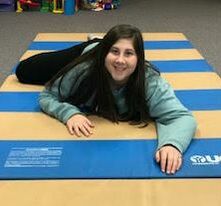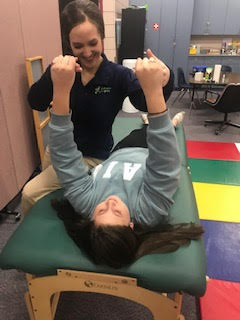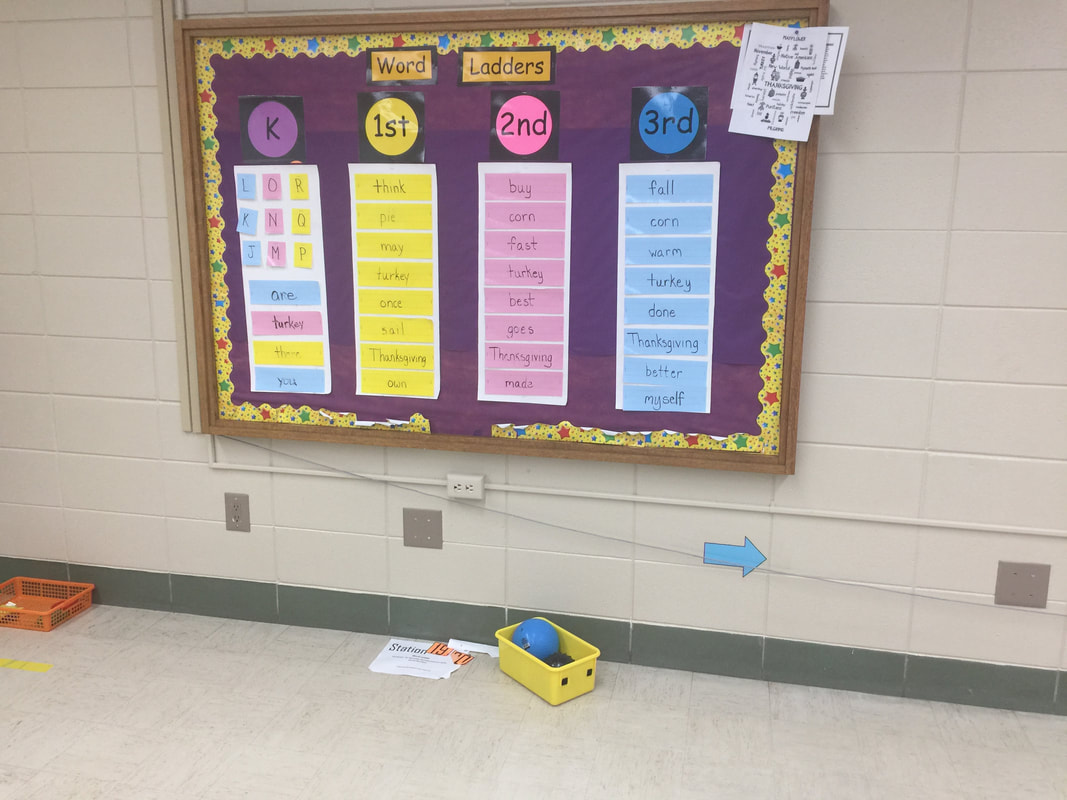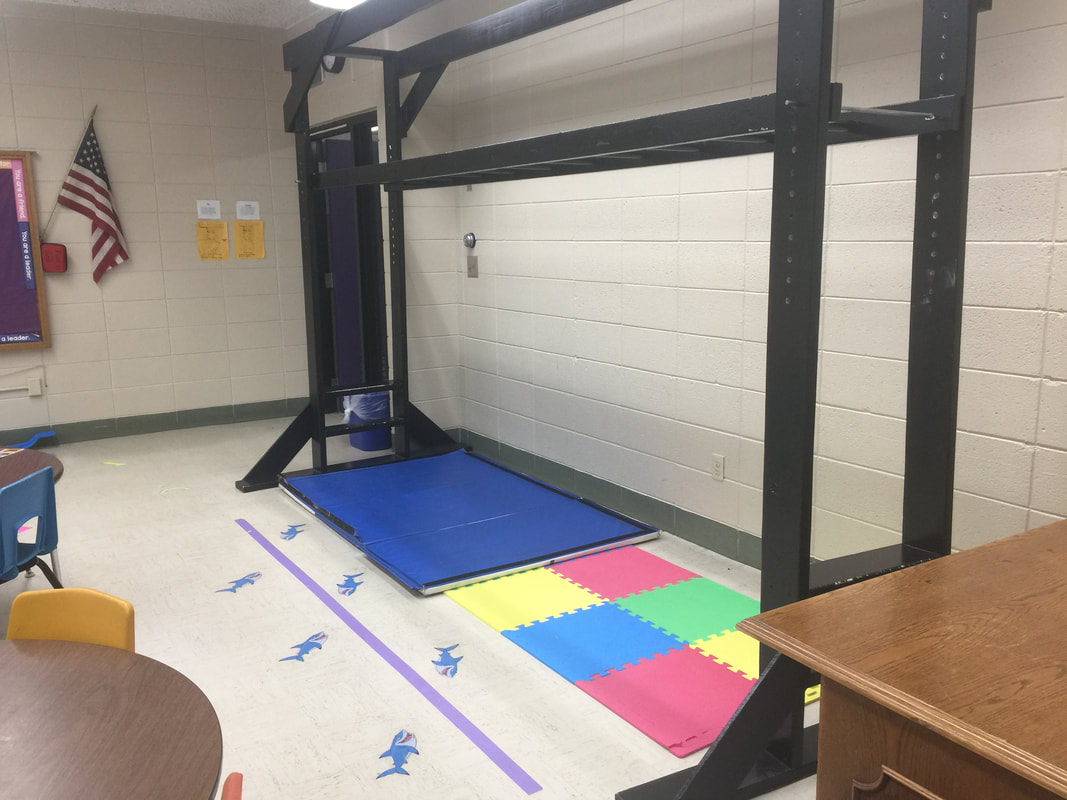 It’s not always immediately visible, but an early childhood health concern can have ripple effects through later stages of adolescent development. In situations like this, it’s vital to address foundational development that may have been obscured by physical needs. Grace was born with hip dysplasia. By the time she was10-years-old, she’d already had five surgeries to correct the issue. Following her last procedure, she was confined to a body cast for six weeks. The surgeries and subsequent immobility affected Grace physically, causing her to struggle with side-to-side movement, going up-and-down stairs and stunting her gross-motor skills. Grace underwent physical therapy throughout her childhood, but her mom, Anna, a special education teacher, noticed that Grace’s cognitive development was delayed as well. “As she got older, I noticed she couldn’t connect what she was learning in school,” said Anna. “I saw that she was easily distracted, struggled to read and had difficulty picking up normal social cues.” Upon relocating to the Twin Cities, Anna learned that Grace’s IEP did not apply to the Minnesota public school Special Education model, and that it was being revoked. Anna set out on a quest to discover the best long-term approach to help Grace reach her full potential. Anna was referred to A Chance To Grow by a friend and scheduled an appointment for an audiologist to evaluate Grace. “We learned that Grace had an auditory processing disorder,” said Anna. “She had difficulty comprehending auditory information which was causing some of her learning delays.” Instead of treating the auditory processing disorder with traditional therapy, the audiologist at A Chance To Grow referred Grace to the agency’s occupational therapy team to address her foundational level motor skills. After these skills are developed and strengthened, higher-level functions like auditory processing could be treated more successfully.  Shortly after Grace’s evaluation, she started coming to A Chance To Grow every other week for occupational therapy sessions. “She bonded immediately with her therapist, Alyssa,” said Anna. “They began doing a combination of therapies that focused on Grace ‘crossing the midline’ to help the left side of her body and brain better communicate with the right side.” Alyssa observed that Grace had low endurance, poor reflexes and core strength. To address this, she created a treatment plan around the archetype movements of MNRI (Masgutova NeuroSensory Reflex Integration), yoga and a few activities, like belly crawling, from ACTG’s S.M.A.R.T. approach. Anna even attended the S.M.A.R.T. workshop to implement the activities in her own classroom, as well as for Grace at their home. “Over the last two years I’ve seen amazing progress from Grace,” said Alyssa. “When we first started, she was hesitant to participate in any physically-active functions. She dreaded going on field trips at school because of the physical limitations she had. As we’ve worked together, though, and strengthened her reflexes and foundational levels, that anxiety has begun to fade away.” Anna says she’s also seen great strides in regards to Grace’s memory retention and executive functioning skills. Recently, Grace moved to a new school with better resources for students with learning disabilities. Anna says that the curriculum has been very complementary to the therapies provided by ACTG. “Despite her struggles, Grace is a happy, healthy kid who’s on the right track,” said Anna. “Alyssa understands Grace’s personality and Grace really looks forward to her therapy sessions. She’s always been a free spirit, and with Alyssa’s help, she’s gaining more confidence every day.”
0 Comments
Most days during the 2017 school year, Jamie Bartels’ classroom at South Central Calhoun Elementary was full of young students neatly packed into a 24-station computer lab. They would come in, put on a pair of headphones and quietly click away as they steadily stared into a glowing screen. “I was concerned by my student’s lack of engagement,” said Mrs. Bartels. “I felt it was time to make a change at our school. We needed to get our kids moving!” In an effort to shift this trend, she inquired with her school’s instructional coach (staff member that helps bring evidence-based practices into classrooms) to seek out an alternative program for her students. The coach recommended S.M.A.R.T. (Stimulating Maturity through Accelerated Readiness Training) -- a developmental approach to teaching built around a variety of physical exercises that provide specific brain stimulation associated with learning. These activities, designed to be done daily in a single 30-minute period, strengthen a child’s visual and auditory skills, body awareness, fine motor abilities and primitive reflexes. Since 1999, more than 5,000 educators in 300 schools across the country have implemented the program to prepare their student’s readiness to learn. It was the exactly what Mrs. Bartels was looking for. When the school year ended, Jamie traveled from Rockwell City, Iowa, to Minneapolis to attend a three-day S.M.A.R.T. workshop at A Chance To Grow. The summer-time workshop provided Jamie with lots of ideas to get her students moving, and the notion of transforming her computer lab into a S.M.A.R.T. room began to percolate. “I didn’t realize the impact these simple activities could make in a student’s overall ability to learn,” she said. “I couldn’t wait to get back to school to share with the other teachers what I learned and to begin implementing S.M.A.R.T. activities in my room.” Mrs. Bartels returned to her classroom in September and immediately began clearing out computers to make room for the new S.M.A.R.T. stations. With support from school administrators, she was able to create a 12-activity circuit in her S.M.A.R.T. room (formerly known as the computer lab), comprising of a hanging ladder, two rebounders, fine and gross motor activities, word ladders and more. “The kids really like it”, she said, “they’re excited to come to class.” Mrs. Bartels is now the school’s official S.M.A.R.T. Teacher. In its inaugural year, she says, pre-K through third grade classes spend 30 minutes in the S.M.A.R.T. room, twice weekly, as part of the curriculum. In her brief time working the program, she has already seen several positive changes in student performance. “I had a second grade student who wasn’t interested in trying anything new,” said Mrs. Bartels. “After a few weeks in the S.M.A.R.T. room, his attitude completely changed. I’ve been able to connect with him and he’s a whole new kid when he comes to school. He doesn’t need any convincing to do the activities and his other teachers say he’s more engaged in their classes too.”
Jamie has also seen changes in a few students with behavioral issues. She loves that students are able to come in and do a few stations to burn off some restless energy. She says the program allows her to work one-on-one with these students to build a level of trust that helps in all aspects of the school day. “All the teacher’s love it and our class aids are starting to learn some of the techniques as well,” she said. “Parents are very curious, too. We sent a letter home explaining the program and invited them to tour the room during parent-teacher conferences. It was so fun to see the students walk their parents through the S.M.A.R.T. room to explain the stations and the reasons behind the activities.” Mrs. Bartels’ third-graders recently completed a survey and voted S.M.A.R.T. as their favorite “special” class during the week. Jamie hopes to expand the program going forward, but admits the biggest obstacle is finding enough time throughout the week to make sure each student gets adequate S.M.A.R.T. time. To address this, she plans S.M.A.R.T. activities during recess. “I really enjoy finding new ways to implement activities and adapt stations that become repetitive,” she said. “The difference between last year and this year is amazing. We have a whole lot more fun learning now, and we want to keep it that way!” |
success story category:
All
WE LOVE HEARING FROM YOU! |


